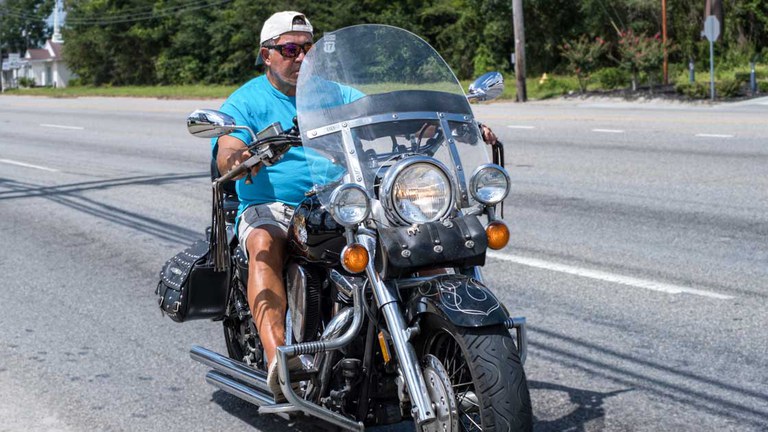Lax helmet laws have killed more than 20,000 motorcyclists, study shows (IIHS)
Shift into Safe News
More than 20,000 motorcyclists who died in crashes in the U.S. since the mid-1970s would have survived if stronger helmet laws had been in place, a new study from the Insurance Institute for Highway Safety (IIHS) shows.
If every state had required all riders to wear helmets from 1976 to 2022, a total of 22,058 motorcyclists’ lives could have been saved. The number represents 11% of all rider fatalities over those years.
“Requiring all riders to wear helmets is a commonsense rule not that different from requiring people in cars to buckle up,” said IIHS President David Harkey. “We have an obligation to protect everyone on our roadways through smart policy.”
Currently, only 17 states and the District of Columbia have all-rider helmet laws in place. Meanwhile, record numbers of motorcyclists — more than 6,000 each year — were killed in 2021 and 2022, the most recent years for which statistics are available. If the remaining states came on board, the death toll could be cut by as much as 10%. Other measures like crash prevention technology that’s better at detecting motorcycles and mandatory anti-lock brakes on motorcycles themselves are also needed to improve rider safety. But all-rider helmet laws are a key part of a Safe System approach to the issue.
“Wearing a helmet is one of the biggest things riders can do to protect themselves from death and traumatic brain injury,” said Eric Teoh, IIHS director of statistical services and the author of the paper. “We understand that requiring helmets for all riders everywhere would be unpopular with some motorcyclists, but this could save hundreds of lives each year. Those aren’t just numbers. They’re friends, parents and children.”
The first all-rider helmet laws took effect in 1967, after the National Highway Safety Act made them a prerequisite for certain highway safety and construction funds. By July 1975, 47 states and the District of Columbia had such laws on the books.
In the years since the funding restriction was removed in 1976, however, most states have weakened their helmet laws to be applicable only to riders under 18 or 21 years old or repealed them altogether. This trend has persisted even as seat belt laws have become more stringent.
To determine the human cost of allowing unhelmeted motorcycling, Teoh compared the number of helmeted and unhelmeted riders killed each year in jurisdictions with and without all-rider helmet laws. That allowed him to estimate helmet use rates for the states when all-rider laws were in effect and when they weren’t. He then estimated the number of lives that would have been saved each year if all-rider helmet laws had been universal throughout the entire 1976-2022 period. For that calculation, he used the 37% decrease in motorcyclist fatality risk associated with wearing a helmet established by other published research. In another analysis, he estimated the cumulative effect of allowing unhelmeted motorcycling within each state.

